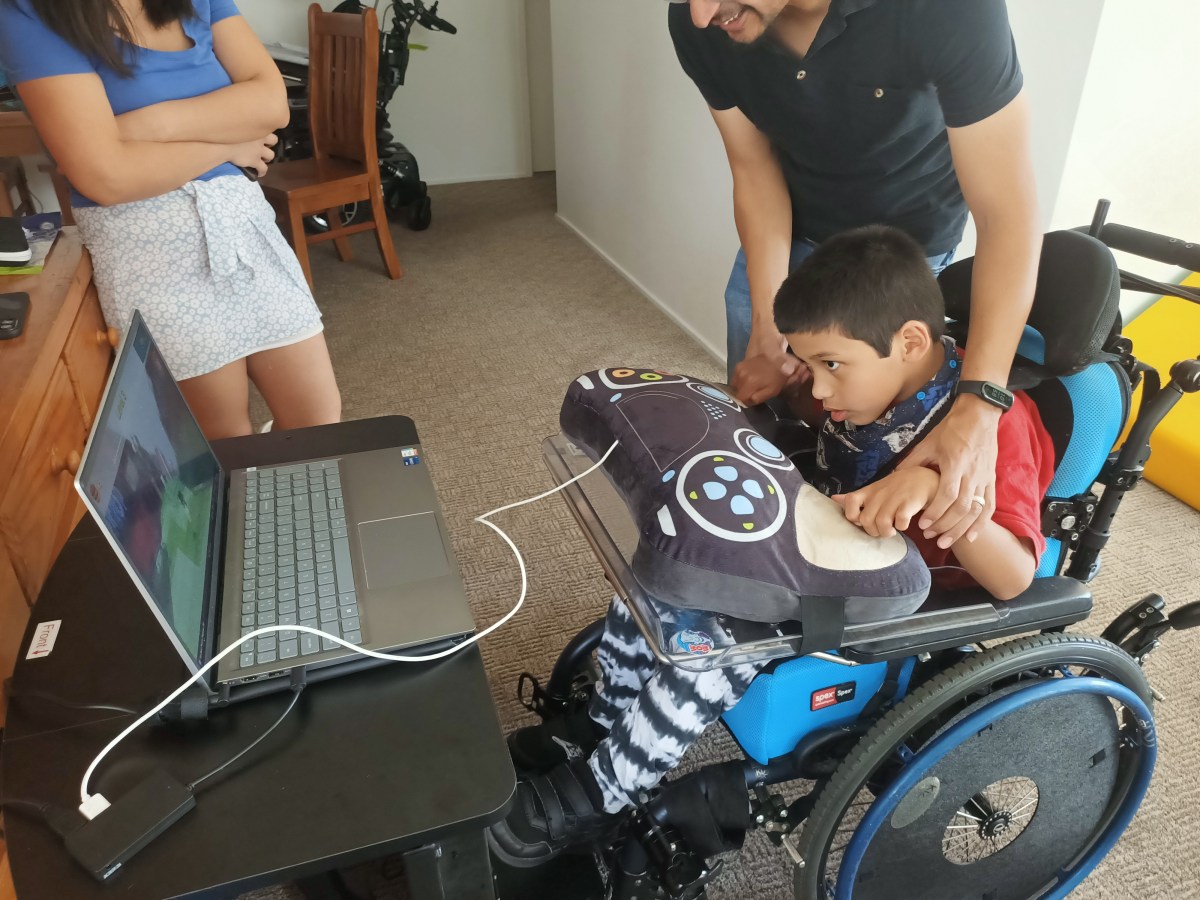Jerome, a seven-year-old boy with cerebral palsy (CP), has been able to play a video game for the first time, with the help of team of University of Melbourne Biomedical Engineering masters students, who co-designed a customised video game controller.
Neural Engineering senior lecturer, Dr Sam John said the group worked to develop a range of potential technologies that Jerome could use and spoke with Jerome’s family about how he interacts with technology and assistive devices.
“It became clear that there was no AT that could be purchased that was close to being helpful for Jerome to play a video game. The few that were available were too expensive and not fit for purpose, even with modifications,” John said. “We needed a bespoke device fit for purpose and designed to work specifically for Jerome, and the team settled on three technologies that had the potential to be successful,” he said.
The team used a fast-prototyping principle to build a touch button that did not need fine motor skills, a kick button (Jerome was known to use his feet to apply some pressure) and motion-tracking software.
Benefits of video games for children with CP:
- Video games can play a role in the lives of children with cerebral palsy by providing both entertainment and therapeutic benefits
- Games that use motion-sensing technology or virtual reality are especially helpful as part of physical therapy
- Certain video games can also enhance cognitive skills, including problem-solving, spatial awareness and strategic thinking
- Multiplayer video games or online gaming communities can provide opportunities for children with cerebral palsy to interact with their peers and build social skills, offering a sense of accomplishment and autonomy.
Over the next five years, the team hopes to expand the project to help more people with motor function loss to use AT devices with bespoke controllers designed with them, to suit their individual needs and goals.
Read more on: https://pursuit.unimelb.edu.au/articles/kids-with-disability-are-gamers-too

